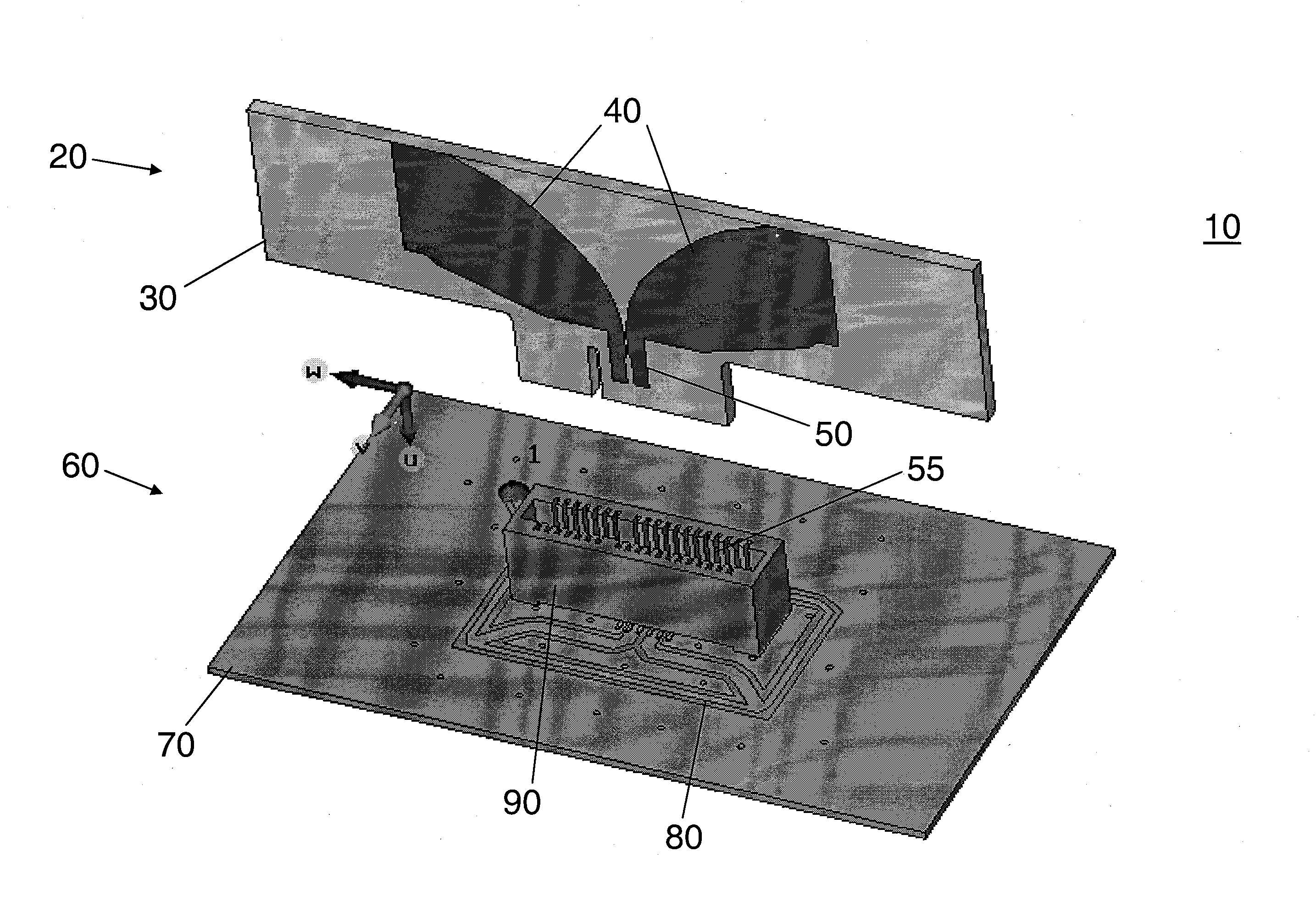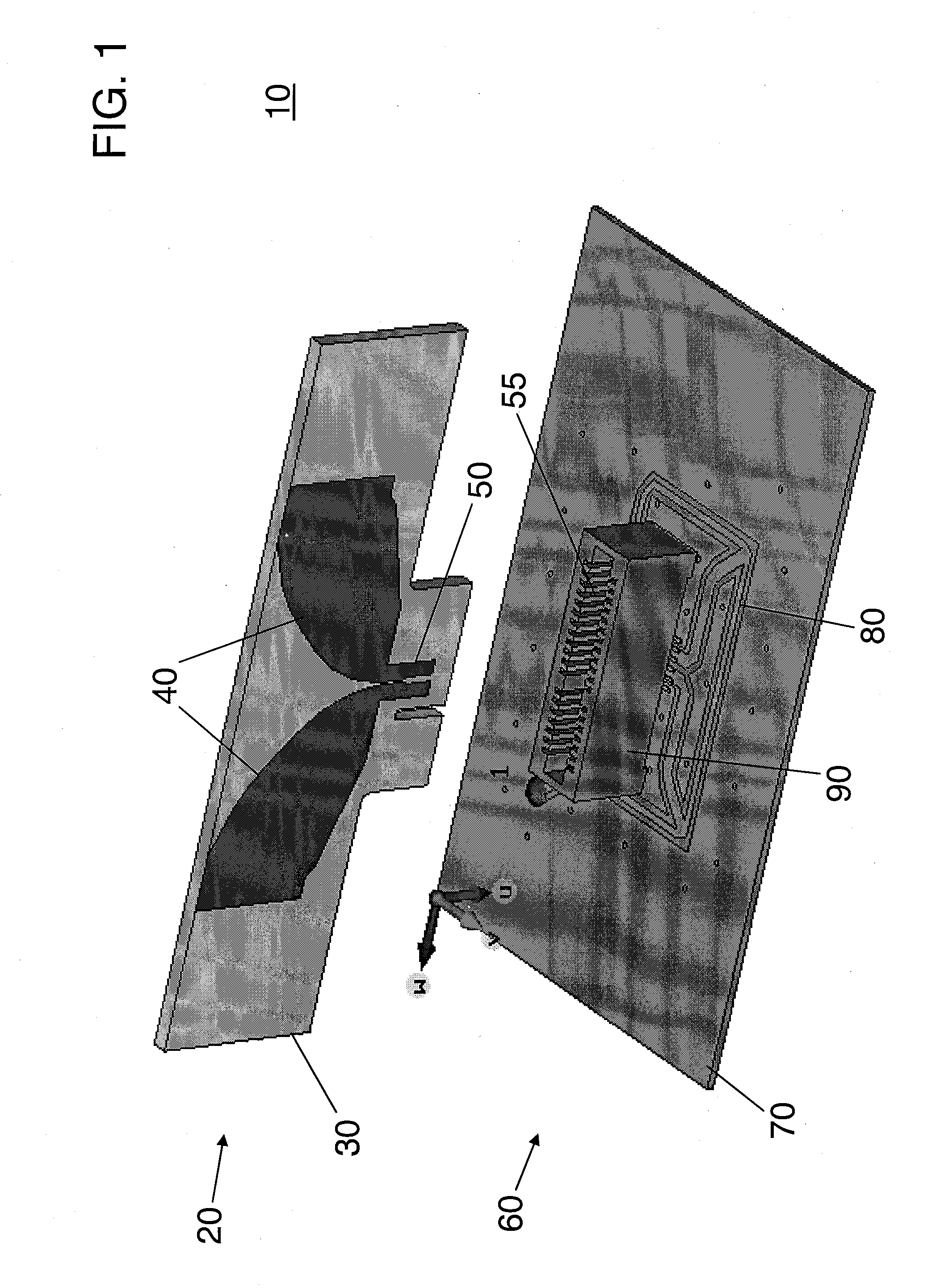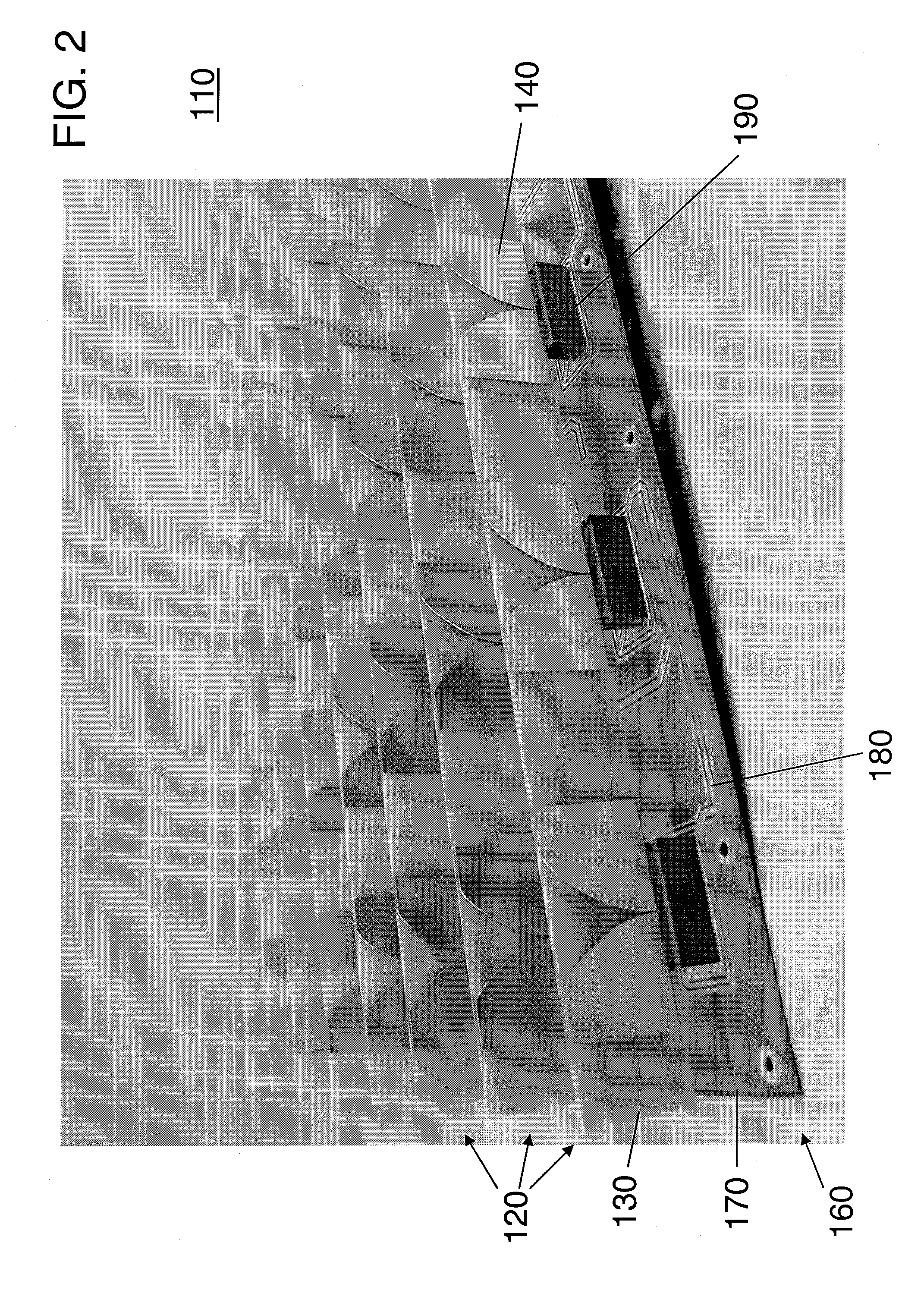Plug-in antenna
a plug-in antenna and antenna technology, applied in the field of plug-in antennas, can solve the problems of high cost of fabricating and assembling antenna arrays using many of the prior art approaches, not meeting the unique challenges of low-cost plug-in antennas, and not being able to meet the needs of low-cost assembly using pick and place machines, etc., to achieve the effect of low cost, easy assembly and low cos
- Summary
- Abstract
- Description
- Claims
- Application Information
AI Technical Summary
Benefits of technology
Problems solved by technology
Method used
Image
Examples
Embodiment Construction
[0040]Exemplary embodiments of the present invention will now be described in more detail with reference to the accompanying drawings. Like reference numerals refer to like elements throughout.
[0041]There are a variety of integration mechanisms for an antenna into an electronic system. Antennas that screw into the transceiver chassis often require manual tools, to insure correct installation. Antenna elements that solder in place can pose difficulties due to the 3-dimensional nature of antennas and processes that are geared to PCB planar soldering. For transceivers, such as wireless handsets, or radars that are capable of being serviced, simple disassembly is required to keep the service costs low and to minimize damage to the device. Other approaches include utilizing pins either soldered to the antenna boards or routed into the boards. However, these are not low cost solutions for assembly of parts onto a standard circuit board because the antenna element cannot be installed by a ...
PUM
 Login to View More
Login to View More Abstract
Description
Claims
Application Information
 Login to View More
Login to View More - R&D
- Intellectual Property
- Life Sciences
- Materials
- Tech Scout
- Unparalleled Data Quality
- Higher Quality Content
- 60% Fewer Hallucinations
Browse by: Latest US Patents, China's latest patents, Technical Efficacy Thesaurus, Application Domain, Technology Topic, Popular Technical Reports.
© 2025 PatSnap. All rights reserved.Legal|Privacy policy|Modern Slavery Act Transparency Statement|Sitemap|About US| Contact US: help@patsnap.com



